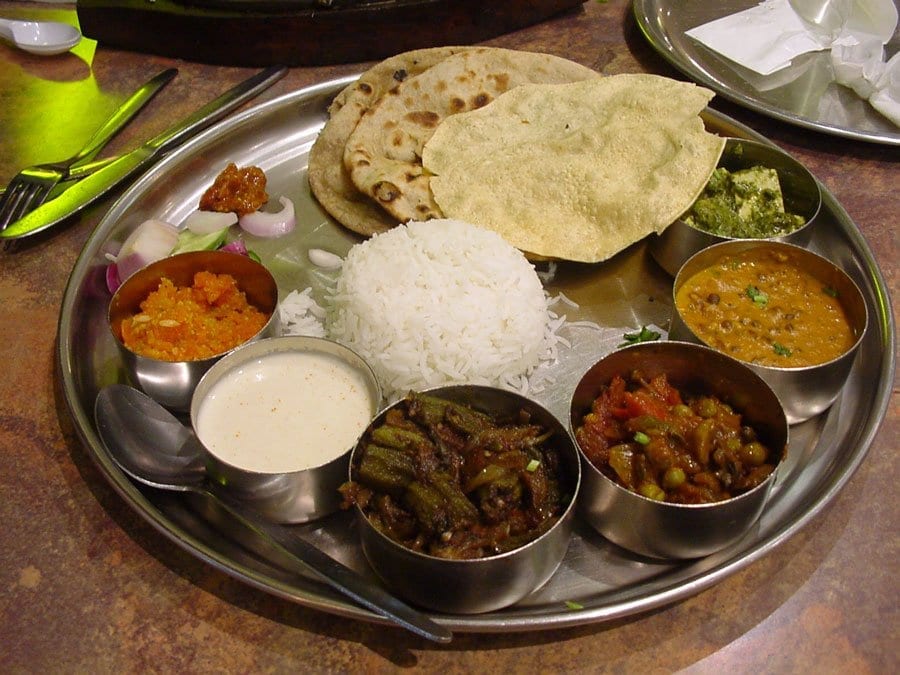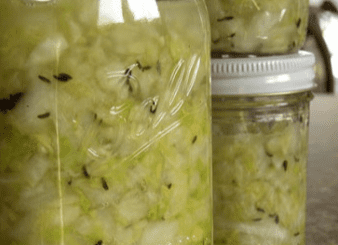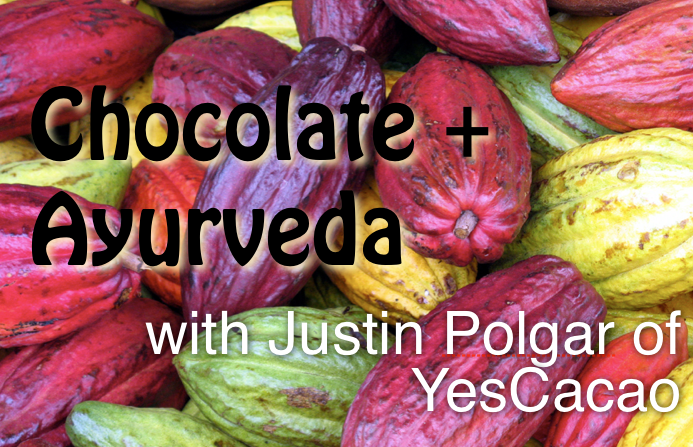Ayurveda and Fermented Foods


Worship your agni..and you’ll be stoked.
Ayurveda, and probably every kitchen wife in before the industrial revolution, knew the benefits of homemade ferments. Because they were an essential tool to make food last. The vaidyas of yore noticed that fermented foods enkindle agni – the power of digestion.
I remember reading Dr. Robert Svoboda’s Aghora series a decade ago. In it he tells a story of his guru, Tantric adept Aghori Vimalananda, teaching him about the 5 elements. His guru tells him to worship the 5 elements… but if he has to choose one, to choose fire. That is the teaching of agni in Ayurveda.
If your is strong and balanced… you have an opportunity to thrive. If you’re not digesting well… you’ll develop ama, or gut inflammation and toxic residue from undigested unabsorbed foods and that will slowly sink your ship. Fermented foods contain living bacteria that digest ama and replenish enzymes – which create functional agni.
Pathologically enough, in Ayurveda school I didn’t learn how to ferment vegetables. I learned intellectually the benefits of adding yogurt to cooked foods meals. But, it was just intellectual and I didn’t get my hands bio-enzymatically engaged and learn how the power of agni is in my own cabbage-squeezing hands. (In the Living Ayurveda Course I fill in this missing education).
After a few years in my Ayurvedic practice I went to India for 3 months to see what I could learn. During that time I completed Dr. Lad’s Gurukula program in Ayurvedic practice, I spent a few weeks at Krishnamacharya’s YogaMandiram chanting, I sat a Goenke Vipassana Retreat, and I studied Pancha Karma in Kerala. A day didn’t go by that I wasn’t served small batch fermented foods.
Indian food is fermented

For breakfast I’d have idli – a fermented lentil and rice cake. Idli is served with chutney, which is also traditionally a fermented food. For lunch I’d have the local thali – or one plate meal that has 10 different things on it, based on rice, sambar (a loose dhal), and vegetables. Thalis always include a few fermented foods – namely a yogurt sauce and fermented vegetable and fermented fruit relishes. Dinner may be a dosa, stuffed with potatoes and chutneys. Dosas, like idli’s take rice and beans and ferment them for digestibility.
This explains why people in India have better (more diverse) gut bacteria than us wealthier Westerners. We simply outsourced our food creation to the extent that we lost most of the good bacteria in our diet.
“More (gut microbial) diversity is probably better than less, because a diverse ecosystem is generally more resilient — and diversity in the Western gut is significantly lower than in other, less-industrialized populations.” Michael Pollan, New York Times May 15 2013 (Bold added because I know my readers scan).
As Westerners we have outsourced and outsmarted ourselves once again in our exploitation of convenience, mass production, and centralized food production.
Ayurvedic Eating 101

Example of pushing constitution over seasonal kitchen skills.
When we have clients or students who are new to Ayurveda we often teach them to eat a doshic diet first. Instead of teaching their clients how to eat seasonally and teach them basic kitchen skills like sprouting and fermentation… we give them a print out of a “doshically appropriate” diet. Pittas need to drop the wine, the hot sauce, the chocolate and the coffee. Vatas need to cut out chips, salads and coffee. Kaphas need to get over their comfort foods.
This is helpful, but not as helpful as it could be. And it’s definitely not capturing the essence of Ayurveda. Ayurveda teaches practitioners to prioritize the most helpful remedies and to uproot problems at their source. If a whole family needs to up their gut bacteria – and they have different constitutions, focusing on constitutions is going to make the mother who is trying to feed her family neurotic… without touching the root of the problem.
If we’re going to help our clients where they need it most, we need to really get that Agni is king… and that agni is fed by small batch biodiverse fermented foods.
Most people get off track when they are prescribed an “Ayurvedic Diet” without the larger context of understanding that nourishes their agni. This may be because most Ayurvedic practitioners don’t make their own locally grown fermented foods.
Bringing Fermented Foods into Practical Modern Ayurveda

As Ayurveda merges with the western world – we need to be aware that most westerners have a lack of diversity in the microbiome. Many of my students before working with me were taking probiotic supplements and enzymes to deal with their poor digestion.
While a doshically-appropriate diet will help, my sense is that a local and seasonal diet with homemade fermented foods will help a lot more. We need to teach our clients and students to make their very own fermented foods… just like we teach them to rub oil on their very own bodies. Yes, it takes time… as good things with multiple side-benefits often do. Dr. Claudia – do you think squeezing cabbage increases serotonin or oxytocin like petting a cat or kneading bread? It just might….
If you’re psyched to become a fermentation revivalist or simply make some sauerkraut – start today. It’s a ridiculously simple and inexpensive hands-on kitchen skill to up your immune function, your digestion and your thrive. And check out my interview with Fermentation Revivalist Sandor Katz. He’ll get you massaging your cabbage in no time.


















ayur clinic
Posted at 10:59h, 20 SeptemberAyurveda is not only a treatment for a particular disease it is to be followed in our day to day activities everyday like yoga, taking proper diet, doing exercises all these are aslo part of ayuvedic treatments. If we habituate ayurvedic tips in our day to day life we will have healthy and long life. You have given accurate information about the food items to be taken which is really important. Its really cool.
Shoshanna
Posted at 19:35h, 30 OctoberHi Kate,
Thanks for allll the great info you share.
I am always a bit tweaked when there is strong contradictions.. I have been told by a few Vaidyas not to do fermented foods.
What’s the reason for the difference in opinion?
Larry Carlton
Posted at 09:14h, 16 JanuaryWOW!!!!!!!!!! Such a nice article for combination of food. Really people eat any things and they suffer from many stomach problems. Thanks for sharing. http://www.healthgenie.in/nutrition/speciality-nutrition/ayurvedic-extracts
Pia White
Posted at 13:08h, 18 NovemberI love this, I can totally relate to going mad trying to feed all the different family members (& constitutions!). Quick question, my whole family eats to balance pitta in the summer. Which fermented food do you think would be best….and do you have any tips to get kids eating fermented food? Thanks (I know this post is old)
Dileep
Posted at 06:08h, 26 FebruaryHi..Cate..Indian food evolved through different Indian climate zones and is best suited to the body constitution of people residing there. However the basic principle is to include in food what ever crops that could be grown naturally in a particular season, which essentially meant that a person living in the south of India wont be eating the same diet as the person living in the North. Being an Indian myself, I am really happy to see people promoting Indian food; but as a matter of fact just like how European foods wont suit my body for the long term, similarly, eating Indian foods wont benefit you in the long run. Just my two cents.
Jelena
Posted at 11:44h, 25 AprilHello Dileep, thank you for your opinion. That is a good point, in start maybe it will be hard to get used to a new type of food, but eventually, we can create a new habit of eating that new type. In time we can evolve into new types of food.
Susie Colles
Posted at 08:04h, 19 MarchHi! This comment (belatedly) relates to Shoshanna’s question (posted at 30 October 2013). I’m an Ayurvedic practitioner, and from that perspective I imagine that advice to reduce fermented foods would come because you are either a pitta pure type, a warm mixed-pitta type, or have a pitta imbalance. As fermented foods taste sour and are heating, you’ve been advised against them. Fermented foods however, are a broad category. Yeast-leavened bread is fermented (albeit in an incomplete, unhelpful way), and so is hand-mixed, wild-fermented sauerkraut. Both will be slightly warming, but the wild fermented food provides abundant bacterial and enzyme support to the gut agni. In my view, those with pitta in their constitution, and even those with pitta imbalance generally benefit from small regular intakes of naturally fermented foods—rather than create or exacerbate imbalance. Some Ayurvedic practitioners may not fully appreciate the microbial benefits of ferments in the diet. In the heat of the summer, you may find you feel less like ferments. Warmer climates also generally coincide with more fresh foods that cool the body and contribute their own enzymes and healthy bacteria. The best way to work out what’s right for you (in this moment), is to try things out and observe what happens.
how do i know if i have herpes
Posted at 10:34h, 18 AprilGood write-up, I’m regular visitor of one’s site, maintain up the excellent operate, and It is going to be a regular visitor for a long time.
Jelena
Posted at 17:53h, 16 MayThank you so much for the feedback!